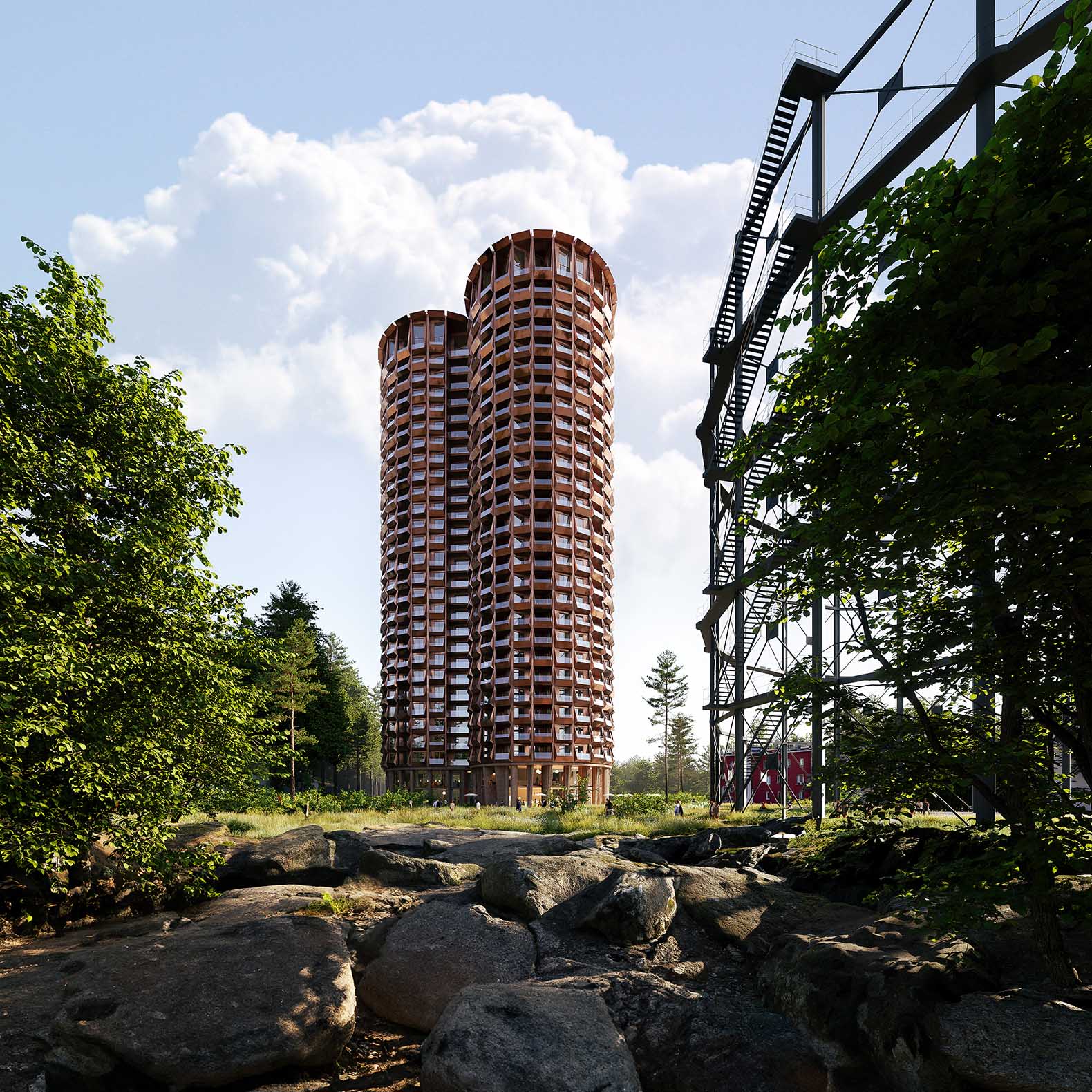The residential tower rises 110 meters above sea level and will have a significant impact on Stockholm’s cityscape. Its circular design not only pays homage to the site’s historic gasometers but also contributes to a cohesive family of circular buildings in the former gasworks grounds. With three bundled cylinders, ‘Stadsljus’ becomes the next-generation gasometer within a volume ideally suited for housing.

Residential tower at Stockholm’s historic gasworks by Cobe and Yellon. Rendering by Cobe and Yellon.
Housing for people in all phases of lifeThe building contains approx. 300 apartments of various sizes – from space-efficient studios to spacious apartments. 20 percent of the apartments will be offered through a co-ownership model, making it possible for more people to buy a home in ‘Stadsljus’. The design’s three clustered cylinders feature optimal conditions for natural light within each apartment. Its distinctive shape allows for units to face multiple directions, with spectacular panoramic views over Stockholm, while many units have one or more terraces.
Reflecting the contextThe tower is composed of a distinct base, body, and crown, inspired by the surrounding gasometers. An open brick base draws inspiration from the brick facade of the historic Boberg gasholders and contains public functions such as a restaurant and a preschool. Inspired by the rational and repetitive steel skeleton of another nearby gasholder, the body of the tower consists of a modular, three-dimensional metal façade, subtly capturing daylight on its angled surfaces. Finally, the crown is a tribute to the top of the Boberg gasholders with a faceted and pitched roof and a pronounced overhang, making a distinctive mark on Stockholm’s skyline, while featuring solar cells and concealing technical devices.
The construction utilizes a modular and prefabricated façade assembly system, efficient in terms of time, economy, production, and precision. The façade is composed of a modular skeleton containing closed wall panels, windows, doors, and balconies, that allow for various configurations to strike the right balance between variety and rationality while ensuring optimal indoor climate in each apartment.
The construction start is planned for 2026 with occupancy from 2029.




























